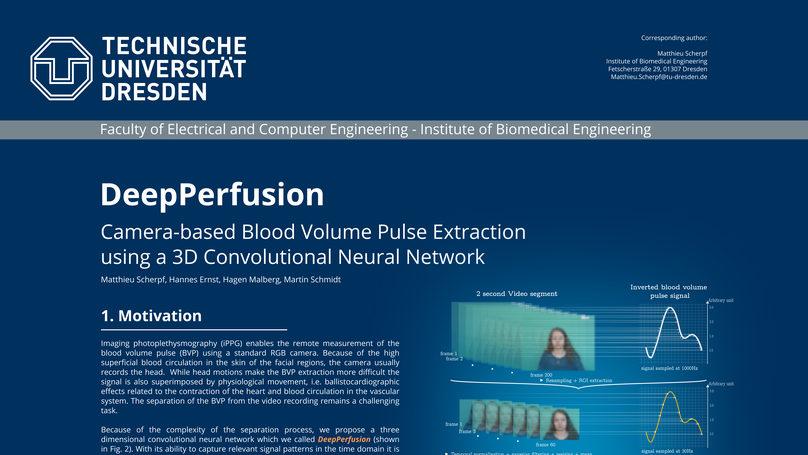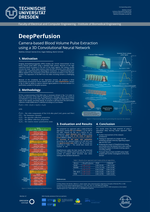Biography
I’m leading the Medical Sensing Research Group at the Institute of Biomedical Engineering at the Technische Universität Dresden. My research focuses on the development of non-contact medical sensor technologies to ease the future vital sign measurement.
I am currently focused on improving imaging photoplethysmography (iPPG) which aims to measure vital signs like the heart and breathing rate using video recordings of human skin. In order to achieve this, I’m implementing machine learning technologies including artificial neural networks to extract the information from complex data.
I am mainly interested in Machine Learning and its application to real-world problems.
- Machine Learning
- Artificial Intelligence
- Biomedical Signal Acquisition
- Biomedical Engineering
- Image and Video Processing
-
PhD in Biomedical Engineering, pending
Technische Universität Dresden
-
Diploma in Electrical Engineering, 2018
Technische Universität Dresden
Skills
95%
95%
85%
90%
65%
60%
80%
75%
75%
Featured Publications

Imaging photoplethysmography (iPPG) is a camerabased approach for the remote extraction of the blood volume pulse (BVP) most commonly applied to facial video recordings. The major challenges of this promising technique are the low amplitude of BVP signals and their superposition with artifacts as well as physiological and non-physiological movement induced distortions. We addressed this complexity with a 3D convolutional neural network, which we called DeepPerfusion, to improve BVP extraction from iPPG. Our approach is based on the idea of enabling DeepPerfusion to learn the extraction of the BVP from videos by understanding their relation to the ground truth signals. First results show that DeepPerfusion outperforms state-of-the-art algorithms for remote BVP extraction demonstrating a mean absolute error of 0.66 beats per minute (up to 60% improvement) regarding the BVP based pulse rate estimation for 21 randomly chosen held out test subjects of the UBFC dataset.
Selected Publications
Contact
- Matthieu.Scherpf@tu-dresden.de
- Fetscherstraße 29, 01307 Dresden, Germany
- TU Dresden, Institute of Biomedical Engineering
